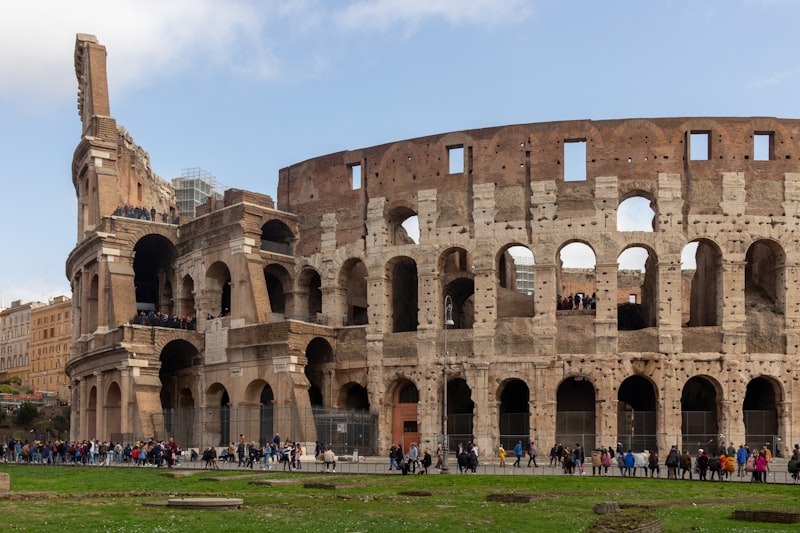Europe’s theaters stand as timeless witnesses to centuries of artistic brilliance and cultural heritage. From the opulent opera houses of Vienna to the ancient amphitheaters of Rome, these venues embody the essence of theatrical artistry and historical grandeur.
Imagine stepping into the breathtaking beauty of Teatro di San Carlo in Naples, Italy. Built in 1737, it remains the oldest continuously active opera house in the world, a testament to Italy’s passion for opera and classical music. The ornate interiors adorned with golden trimmings and plush velvet seats transport visitors to a bygone era of aristocratic elegance.
Further north, in London’s West End, the Theatre Royal Drury Lane reigns supreme. Established in 1663, it has witnessed countless Shakespearean plays, musicals, and even hosted the coronation ball of King George IV. Its stage has echoed with the performances of legendary actors and singers, making it a cornerstone of British theatrical tradition.
For those drawn to the charm of Parisian theaters, Palais Garnier stands as an architectural marvel. Designed by Charles Garnier and inaugurated in 1875, it exudes opulence with its marble staircase, chandeliers, and a ceiling painted by Marc Chagall. This opera house not only hosts ballet and opera but also serves as a symbol of Paris’ cultural prestige.
Across the continent, the Mariinsky Theatre in Saint Petersburg, Russia, holds a special place in the hearts of ballet enthusiasts. Founded in 1783, it has nurtured world-renowned dancers and showcased Tchaikovsky’s masterpieces. The Mariinsky’s neoclassical façade and intimate auditorium create an unmatched ambiance for experiencing Russian ballet at its finest.

Europe’s historic theaters aren’t merely venues; they are living museums of artistic expression and architectural splendor. Each one tells a unique story of creativity, resilience, and the enduring power of the performing arts. Whether you’re captivated by the drama of tragedy or the elegance of ballet, these theaters offer an unforgettable journey through Europe’s cultural tapestry.
This article aims to evoke the allure and cultural significance of Europe’s most historic theaters, blending informative details with a captivating narrative style.
Unveiling Europe’s Timeless Stages: A Journey through Historic Theaters
Take a moment to envision the magnificence of Italy’s La Scala in Milan. This opera house, dating back to the late 18th century, has hosted the premieres of renowned operas and ballets, attracting artists and audiences from around the globe. Its opulent interiors and superb acoustics make it a haven for opera enthusiasts and a symbol of Milanese pride.
Travel further north to London’s West End, often referred to as the “Theatreland.” Here, historic theaters like the Theatre Royal Drury Lane and the Old Vic Theatre continue to captivate audiences with a diverse repertoire ranging from classic plays to modern productions. The West End is not just a theatrical hub but a cultural phenomenon, where theatrical magic unfolds nightly against the backdrop of bustling streets.
In Vienna, Austria, the Burgtheater stands as a testament to the city’s rich cultural legacy. Established in the 18th century, this historic venue has been a cornerstone of Viennese theater, showcasing both classical and contemporary works. Its grand facade and majestic interiors reflect the city’s imperial past, offering visitors a glimpse into Austria’s artistic soul.
Moving to Greece, the ancient theater of Epidaurus transports visitors to the golden age of Greek drama. Built in the 4th century BC, this open-air amphitheater is renowned for its remarkable acoustics and harmonious design, allowing even a whisper from the stage to be heard throughout the audience. It remains a symbol of the enduring legacy of Greek theater and continues to host performances during the annual Epidaurus Festival.

As you explore these historic theaters across Europe, you’ll uncover more than just architectural marvels. Each venue tells a unique story of artistic innovation, cultural evolution, and the enduring power of live performance. Whether you’re drawn to the grandeur of La Scala, the vibrant energy of London’s West End, the imperial splendor of Vienna’s Burgtheater, or the ancient echoes of Epidaurus, Europe’s theaters promise an unforgettable journey through time and culture.
From Shakespeare to Modern Masterpieces: Europe’s Iconic Theaters Explored
Europe’s theaters stand as timeless stages where history and art converge, offering a glimpse into cultural evolution from centuries past to present-day brilliance. These iconic venues transcend mere entertainment, embodying the essence of artistic expression through the ages.
Imagine stepping into the Globe Theatre, London, where Shakespeare’s immortal words first resonated. Here, the spirit of Elizabethan drama still lingers in the oak beams and thatched roof, transporting visitors to an era of poetic genius and theatrical innovation.
Venture south to Italy, where the Teatro alla Scala in Milan reigns as a temple of opera. Its opulent interiors and legendary acoustics have hosted premieres by Verdi, Puccini, and other luminaries of Italian opera, shaping the very essence of musical performance.
Further east, Vienna’s Burgtheater stands as a beacon of Austrian cultural heritage. Since 1741, this majestic institution has showcased the finest in German-language theater, its grand halls echoing with the works of Goethe, Schiller, and contemporary playwrights, continuing to captivate audiences with its rich repertoire.
Across the channel, Paris unfolds its theatrical splendor at the Palais Garnier. This architectural marvel, with its ornate façade and opulent interiors, epitomizes the grandeur of French opera and ballet. It’s a place where stories come alive through exquisite performances, enchanting spectators with every note and movement.
Meanwhile, in Barcelona, the Gran Teatre del Liceu stands as a testament to Catalan cultural pride. Surviving fires and reconstructions, it has emerged stronger, hosting world-class opera and ballet, enriching the city’s artistic landscape with its resilience and artistic prowess.
In modern times, Europe’s theaters continue to evolve, embracing contemporary works and innovative performances that challenge conventions and inspire new generations of theatergoers. From avant-garde productions in Berlin’s Volksbühne to experimental theater in Amsterdam’s Stadsschouwburg, these venues push the boundaries of artistic expression, ensuring that the legacy of Europe’s iconic theaters remains vibrant and relevant in the 21st century.
The Architectural Gems of Drama: Europe’s Most Historic Theaters Revealed
One such marvel is the Teatro di San Carlo in Naples, Italy. Built-in 1737, it holds the distinction of being the oldest continuously active opera house in the world. Its lavish interiors adorned with plush velvet and gold leaf transport visitors to the grandeur of the Baroque era. As you sit under its opulent chandeliers, you can almost feel the passion of the performers who have graced its stage over centuries.
Moving north to Vienna, Austria, the Burgtheater emerges as a beacon of Austrian cultural pride. Established in 1741, it has survived fires and wars to become a symbol of resilience and artistic excellence. Its Neo-Baroque façade invites theater enthusiasts to delve into classical performances in a setting that blends imperial splendor with contemporary relevance.
Not to be outdone, the Royal Shakespeare Theatre in Stratford-upon-Avon, England, pays homage to the greatest playwright in history. Set along the serene River Avon, this theater celebrates the timeless works of William Shakespeare. With its thrust stage and modern architecture, it offers an intimate connection between actors and audience, making each performance a transformative experience.
In Dresden, Germany, the Semperoper stands as a testament to the enduring spirit of Saxon culture. Destroyed and rebuilt several times, it now dazzles visitors with its ornate Renaissance Revival style. Hosting operas, ballets, and concerts, it continues to enchant audiences with its blend of artistic mastery and architectural splendor.
Behind the Curtains: Exploring the Rich History of Europe’s Theatrical Icons
Picture yourself stepping into the opulent halls of Vienna’s Burgtheater, where every corner exudes a sense of drama and history. Established in 1741, this majestic theater has witnessed the premieres of countless masterpieces by Mozart, Beethoven, and Schubert, echoing with the melodies that shaped musical history. It’s not just a building; it’s a time machine that transports you to the heart of classical European theater.
Moving southwards, Italy’s La Scala in Milan stands as a testament to the grandeur of Italian opera. Since its inauguration in 1778, La Scala has been a stage where opera legends have been born, where Verdi’s stirring compositions and Puccini’s emotional narratives have resonated through its halls. It’s a place where passion meets precision, where the drama of life unfolds through song and spectacle.
For those who seek a taste of Shakespearean drama, London’s Globe Theatre offers a glimpse into Elizabethan England. Reconstructed to mirror the original Globe where Shakespeare’s plays were first performed, it’s a portal to an era when theater was not just entertainment but a reflection of society itself. Imagine standing in the midst of a crowd, swept away by the power of language and the timeless tales that continue to shape our understanding of humanity.
Across the continent, from the avant-garde stages of Berlin’s Volksbühne to the experimental theaters of Paris, Europe’s theatrical landscape is as diverse as it is vibrant. Each venue tells a story of artistic innovation, societal evolution, and the enduring power of the performing arts to inspire, provoke, and entertain.
Echoes of Applause: Discovering Europe’s Oldest Theaters and Their Stories
Imagine stepping into a world where history resonates through the walls and the air is filled with whispers of legendary performances. Europe’s oldest theaters stand as timeless witnesses to the evolution of performing arts, each with a unique tale to tell. From the grand Teatro di San Carlo in Naples, Italy, to the iconic Burgtheater in Vienna, Austria, these theaters have shaped cultural landscapes for centuries.
The Teatro di San Carlo, founded in 1737, is a masterpiece of Neapolitan Baroque architecture. It has survived fires and wars, continuing to host operatic performances that transport audiences to another era. In Vienna, the Burgtheater, established in 1741, boasts a rich repertoire of classical and contemporary plays. Its opulent interiors and illustrious past make it a symbol of Austrian theatrical tradition.
Traveling further north, Sweden’s Royal Dramatic Theatre in Stockholm stands out with its striking blend of Renaissance and Baroque influences. Since 1788, it has showcased Nordic drama and international works, embodying Sweden’s cultural heritage. Meanwhile, London’s Theatre Royal Drury Lane, dating back to 1663, remains a beacon of British theater, having premiered famous plays and musicals that define West End theater history.
These theaters not only serve as stages for artistic expression but also as guardians of cultural identity. They have weathered revolutions, artistic movements, and societal changes, preserving stories that resonate across generations. Each creak of the floorboards and echo of applause carries a narrative of passion, creativity, and resilience.
Exploring Europe’s oldest theaters is a journey through time, where every curtain call echoes with the spirits of actors past and the anticipation of audiences yet to come. These architectural marvels continue to captivate and inspire, reminding us of the enduring power of live performance and the magic found within their hallowed halls.
Where Legends Perform: A Tour of Europe’s Legendary Theaters
Let’s begin our tour with the iconic Teatro alla Scala in Milan, Italy. Known as one of the most prestigious opera houses globally, Teatro alla Scala has hosted luminaries like Maria Callas and Luciano Pavarotti. Its neoclassical facade hides a lavish interior adorned with red velvet and gold leaf, evoking a sense of timeless elegance. Attending a performance here is not just a musical experience but a journey through Italy’s operatic heritage.
Moving northwards to London’s West End, the Theatre Royal Drury Lane stands as a testament to British theatrical tradition. Established in 1663, it has seen numerous adaptations and refurbishments, yet retains its charm as one of London’s oldest functioning theaters. Walking through its doors, one can almost hear the echoes of Shakespearean soliloquies and the laughter from timeless comedies.
Crossing the English Channel, the Palais Garnier in Paris emerges like a vision from a bygone era. This architectural masterpiece, immortalized in Gaston Leroux’s “The Phantom of the Opera,” epitomizes the grandeur of 19th-century French opera houses. With its ornate balconies and a ceiling painted by Marc Chagall, the Palais Garnier offers a visual feast alongside its world-class performances.
Further east lies the Wiener Staatsoper in Vienna, Austria. Renowned for its acoustics and rich repertoire, this opera house has hosted premieres of works by Mozart, Beethoven, and Strauss. The Vienna Philharmonic’s New Year’s Concert, broadcast globally, showcases the venue’s cultural significance and musical prowess.
Europe’s legendary theaters are more than just architectural marvels; they are living monuments to the arts. Each one tells a story of passion, creativity, and the enduring power of performance. Whether you find yourself spellbound by Italian opera or enchanted by British drama, these theaters promise an experience that transcends time and transports you to the heart of artistic expression.
From Opera Houses to Playhouses: Europe’s Most Iconic Theaters Examined
Imagine stepping into the opulent Palais Garnier in Paris, where the shimmering chandeliers and intricate gold leaf detailing transport you to the height of 19th-century French opulence. Home to the Paris Opera Ballet and Opera National de Paris, this iconic theater has hosted legendary performances that continue to captivate audiences from around the globe.
Venture further to London’s West End, where the Royal Opera House in Covent Garden reigns supreme. Renowned for its neoclassical façade and plush velvet seats, this historic venue has been a pillar of British culture since 1732, showcasing everything from classic operas to contemporary ballets.
In Vienna, the grandeur of the Vienna State Opera enchants visitors with its majestic Renaissance Revival architecture and world-class acoustics. As a cornerstone of Austria’s musical heritage, it has been the stage for operatic masterpieces by Mozart, Beethoven, and Strauss, setting the standard for opera houses worldwide.
For a more intimate experience, the Teatro La Fenice in Venice offers a glimpse into Italy’s theatrical splendor. Rebuilt after fires in 1774 and 1836, its name meaning “The Phoenix” symbolizes resilience, echoing its storied past of premiering operas by Verdi and Rossini.
In contrast, the Shakespeare’s Globe Theatre in London takes us back to Elizabethan England, faithfully recreating the bard’s original playhouse. With its thatched roof and open-air design, it provides a visceral connection to Shakespearean drama, where audiences experience timeless tales under the open sky.
Frequently Asked Questions
What makes European historic theaters significant?
Discover why European historic theaters are significant due to their rich architectural heritage, cultural importance, and enduring artistic legacy.
How can I visit historic theaters in Europe?
Learn how to visit historic theaters across Europe with ease. Discover tips on planning your trip, finding the best theaters to visit, and experiencing their rich cultural heritage firsthand.
How do I learn about the history of a specific European theater?
Learn about the history of a specific European theater by researching its founding, major productions, historical significance, and notable performances. Explore archives, documentaries, scholarly articles, and books focused on the theater’s evolution and impact on European culture and performing arts.
Which European cities are known for their historic theaters?
Discover European cities renowned for their historic theaters, each steeped in cultural heritage and architectural splendor. Explore iconic venues in cities like London, Paris, Vienna, and Prague, where centuries of theatrical history unfold amidst grand settings and acclaimed performances.
What are some famous historic theaters in Europe?
Discover renowned historic theaters across Europe, showcasing architectural marvels and cultural legacies from different eras. Explore iconic venues like Teatro La Fenice in Venice, Italy; the Burgtheater in Vienna, Austria; and the Royal Opera House in London, UK.


